Share this Guide
Content-Neutral Simulated Interaction PLO
Submitting Authors: Paula Lancaster, Joe Fisher
Definition: Simulated interactions allow teacher candidates to engage in instructional interactions in controlled environments with adults posing as students. In simulated interactions, teacher candidates provide instruction to their peers who are provided guidance on specific ways to respond. The peers are coached or directed to provide responses that depend on the instructional moves of the teacher candidate providing instruction. To guide responses, a script is provided to the peers. Those teaching then respond to the simulated students and receive feedback on their implementation of the selected instructional practice, including how it influenced student learning, from mentor teachers and/or teacher education faculty. Simulated interactions provide candidates opportunities to practice teaching HLPs before they teach them in K-12 environments. The effectiveness of simulated interactions has been established in several professions, including nursing, business, and education. Findings from studies in different professions show that simulations effect changes in knowledge, self-efficacy, and practice (e.g., Cabello & Topping, 2018; Cobbett & Snelgrove-Clark, 2016).
Description: This simulated interaction occurs during Phase 1 of a four-phase practice-based learning opportunity (PLO). This four-phase PLO was designed by Grand Valley State University (GVSU) faculty to develop the instructional skills located within the larger practice of explicit instruction (High-Leverage Practice, HLP#16). Each of the phases comprises a distinct, but related, PLO. For ease of understanding, we refer to the phases described in the video as individual PLOs. The PLO described in Phase 1 of the video is further explicated in the implementation guidance we provide following the description and context for the PLO. The four PLOs address the first, second, third, and fourth stages of the enactment cycle described by McDonald and colleagues (2013). Descriptions of all the PLOs are as follows.
PLO 1: Content-Neutral Simulated Interaction
Teacher candidates develop knowledge of, and skill in, implementing explicit instruction. They are taught to design, deliver, and analyze explicit instruction to their peers using a familiar non-academic learning objective (e.g., How to make a peanut butter sandwich, how to pack a lunch, how to make a bed). Peers in the course are given a student profile to follow to role-play the behaviors and responses of elementary students in a class and support the teacher candidate in enacting particular components of explicit instruction (see student profile). Teacher candidates providing instruction in this simulation are provided feedback using an explicit instruction rubric. This PLO is the focus of the implementation guidance we provide.
PLO 2: Content-Controlled Simulated Interaction
Teacher candidates develop and deliver a content-specific lesson involving explicit instruction (HLP#16) to teach a cognitive strategy (HLP#14) to their peers. The cognitive strategy is selected based on what they will teach individual K-12 students as part of their clinical course requirements. Candidates practice the same content and are provided with a model of how to teach the content. Similar to PLO 1, peers in the course are given a student profile to follow to role play the behaviors and responses of elementary students in a class and support the teacher candidate in enacting particular components of explicit instruction. Teacher candidates providing the instruction in this simulation are provided feedback on an explicit instruction rubric.
PLO 3: Tutoring With Content-Controlled Lessons
Teacher candidates develop and deliver a series of seven to eight content-specific lessons to an individual child over seven to eight weeks. The lesson content was used for PLO 2 and was negotiated in advance with the schools that host the GSVU candidates. To determine the content, GVSU faculty offer participating schools a couple of content areas in which candidates should learn to apply explicit instruction. If the participating school/district isn’t interested in having candidates address those areas, GVSU faculty find a school that is. GVSU believes that partnerships must be mutually exclusive, and they only want to provide instruction if districts feel it is needed. Teacher candidates are provided feedback on an explicit instruction rubric. See the video for more detail about how the GVSU selects school partners.
PLO 4: Small-Group Instruction
Teacher candidates develop and deliver content-specific lessons to small groups of children or youth within a field placement. At this point, content is decided by classroom teacher. Candidates are evaluated using an explicit instruction rubric.
Note: PLOs 3 and 4 are described in the video, but are not expanded upon in the implementation guides.
Context for the 4 PLOs:
The first three PLOs, described in the video presentation, occur within a course taken during the junior year of GVSU’s teacher preparation program. This course occurs at the beginning of the program’s professional practice sequence. The course is meant to be an introduction to inclusive teaching for elementary teachers. Teacher candidates spend a fair amount of time during the first six weeks in class learning about explicit instruction and aspects of early-reading instruction. PLO 1 is practiced in the first six weeks, and so is PLO 2. In approximately the seventh week of the same course, PLO 3 is introduced. The course is held in a local elementary school and candidates are paired. Each pair is given a folder with lesson shells for specific phonemic awareness and phonics explicit instruction lessons. The pairs complete the lessons and work with the same child for approximately 30 minutes a week for the remaining seven weeks. The instructor is present and observes each group, stepping in as needed and providing feedback on the lesson plans, instruction, and reflections. In the semester following completion of this course, teacher candidates enroll in Teacher Assisting, during which they are expected to deliver small-group explicit instruction (PLO 4).
Content-Neutral Simulated Interaction PLO
Stage 1: Developing Prerequisite Knowledge
What is this stage about?
In this stage, candidates develop knowledge of explicit instruction, how to implement its various components, and how to recognize strong examples of explicit instruction.
How does the instructor implement this stage?
Step 1: Candidates read two to three readings on explicit instruction.
Step 2: Instructor provides a lecture describing and modeling explicit instruction, breaking it down into its various components (See Resource A.1 and Resource A.2).
Step 3: Candidates watch video on HLP#16 and discuss how components described in lecture are applied.
Step 4: Candidates are taught to use the explicit instruction rubric. Candidates watch unedited videos of teachers using HLP#16 and identify behaviors they observe on the rubric. As a class, they discuss strong examples of rubric behaviors and areas of instruction that can be strengthened. The course instructor may model for students how specific behaviors could be strengthened.
Materials and resources used to implement Stage 1
Suggested Readings:
Archer, A. L., & Hughes, C. A. (2011). Explicit instruction: Effective and efficient teaching. New York, NY: Guilford Press.
Deshler, D. D., & Schumaker, J. B. (1988). An instructional model for teaching students how to learn. In J. E. Zins & M. J. Curtis (Eds.), Alternative educational delivery system: Enhancing instructional options for all students (pp. 391-411). Washington, DC: National Association of School Psychologists.
Fisher, J. B. (1999). Mediating the learning of academically diverse groups of students in content-area courses. In K. Harris, M. Pressley, S. Graham, & D. Deshler (Eds.), Teaching every adolescent every day: Learning in diverse schools and classrooms (pp. 240-290). Cambridge, MA: Brookline.
Resource A.1 and Resource A.2: Decomposition of Explicit Instruction PowerPoint and script. Instructors can use this presentation to help candidates understand the specific components of explicit instruction. Instructors can also use the script for decomposition that accompanies the Powerpoint slides. The script shows candidates how to engage in explicit instruction and prepares them to plan their own lesson in Phase 2 of this PLO.
Resource B: HLP #16 video
Resource C: Unedited videos of teachers using HLP #16
Questions other faculty/PD providers might have when implementing this practice
What challenges do candidates confront when learning to provide explicit instruction?
Challenge 1: Candidates do not always understand the difference between demonstrating how to perform a skill and modeling. Instructors will want to provide clear examples that differentiate between a demonstration and modeling. In a demonstration, the teacher might say, “Ch is a diagraph, and it says /ch/ as in chat.” Modeling combines a demonstration with a think-aloud. “Oh, this word (chat) has a ch, and ch makes the /ch/ sound. The at makes the sound /at/. If I say them together, the word is /chat/.
Challenge 2: Candidates may struggle with the clarity and pacing of instruction. To support candidates, instructors might provide guidance about how to choose examples and non-examples and provide tips or strategies for how to maintain student attention while describing and modeling skills and strategies (e.g., choral responding, turn and talk to your neighbor [TTYN]).
Stage 2: Planning the lesson
What is this stage about?
In this stage, candidates use the explicit instruction lesson planning template to plan a content-neutral lesson. The example provided by GVSU faculty is “How to Pack a Lunch.”
How does the instructor implement this stage?
Step 1: Before candidates plan the explicit instruction lesson, they are taught to use the structured protocol and lesson-planning template. Have them review the structure of each component of the lesson plan and discuss expectations for each component using the explicit instruction rubric.
Step 2: Candidates will use the structured protocol and lesson-plan template to design a content-neutral lesson (e.g., How to Pack a Lunch). Provide an exemplar lesson plan protocol to guide students.
Materials and resources used to implement Stage 2
Questions other faculty/PD providers might have when implementing this practice
Can any lesson planning template be used?
Yes, if it contains the key components of explicit instruction.
Stage 3: Enacting the lesson
What is this stage about?
In this stage, candidates deliver the lesson they planned in Stage 2, and their peers play the student role according to the guidance provided in the simulation script.
How does the instructor implement this stage?
Step 1: Teacher candidate delivers lesson to small group of peers.
Step 2: Peers play the role of a typical K-12 student during the lesson. The peers are provided in advance with a simulation script that directs them to engage in certain behaviors.
Step 3: Record the lesson.
Step 4: Peers and the candidate teaching use the Explicit Instruction Rubric to analyze instruction and identify strengths of the instruction and improvements that can be made.
Materials and resources used to implement Stage 3
Questions other faculty/PD providers might have when implementing this practice
How instructors help candidates to feel comfortable with providing feedback?
Instructors will need to explain the importance of constructive feedback to candidates to grow their teaching skills and create a safe place to receive it. They can help students identify the benefits of constructive feedback and provide examples of where feedback is part of the process (e.g., athletes, musicians., writers). Remind candidates that feedback is about the “instruction,” not the “teacher.”
Stage 4: Evaluating the lesson
What is this stage about?
In this stage, candidates reflect on and receive feedback on instruction. Those playing the role of students complete the explicit instruction rubric. The candidate who played the role of the teacher may also complete the explicit instruction rubric after watching a video of his or her instruction. The feedback is then discussed in a brief post conference.
How does the instructor implement this stage?
Step 1: Candidates who played the role of students analyze their feedback from the completed explicit instruction rubric.
Step 2: The candidate who taught watches a video of him or herself and completes the explicit instruction rubric.
Step 3: The simulation group, comprising the candidate who taught and the candidates who played students, share their feedback and discusses ways to improve the instruction.
Materials and resources used to implement Stage 4
Questions other faculty/PD providers might have when implementing this practice
How can instructors encourage the use of constructive feedback?
Instructors can provide models of what constructive feedback looks like. In modeling constructive feedback, instructors can first emphasize positive feedback and then discuss how to provide feedback for improvement (e.g., in future lessons, you might want to think about how to engage students in the model more frequently).
Resources

- Content-Neutral Simulated Interaction PLO Outline
- Resource A: HLP14 Video
- Resource A.1: Decomposition of Explicit Instruction PPT
- Resource A.2: Script for Modeling Decomposition Lesson
- Resource B: HLP 16 Video
- Resource C: Unedited videos of teachers using HLP#16
- Resource D: Structured Protocol and Lesson Planning Template
- Resource E: Explicit Instruction Rubric
- Resource F: Simulation Script
Definition References
Cabello, V. M., & Topping, K. J. (2018). Making scientific concepts explicit through explanations: Simulations of high leverage practice in teacher education. International Journal of Cognitive Research in Science, Engineering, and Education, 6, 35-48. 10.5937/ijcrsee1803035C
Cobbett, S. & Snelgrove-Clark, E. (2016). Virtual versus face-to-face simulation in relations to student knowledge, anxiety, and self-confidence in maternal-newborn nursing: A randomized control trial.





